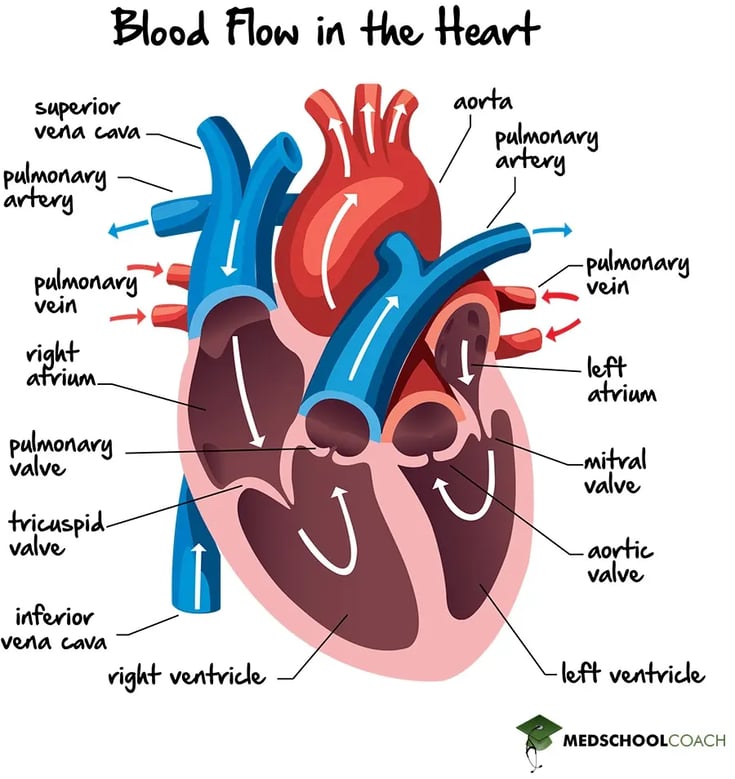Sample MCAT Question - Blood Flow in the Hearth
Blood entering the right ventricle from the right atrium goes through which valve?
a) Tricuspid valve
b) Aortic valve
c) Mitral valve
d) Pulmonary valve
Get 1-on-1 MCAT Tutoring From a Specialist
With MCAT tutoring from MedSchoolCoach, we are committed to help you prepare, excel, and optimize your ideal score on the MCAT exam.
For each student we work with, we learn about their learning style, content knowledge, and goals. We match them with the most suitable tutor and conduct online sessions that make them feel as if they are in the classroom. Each session is recorded, plus with access to whiteboard notes. We focus on high-yield topics if you're pressed for time. If you have more time or high-score goals, we meticulously cover the entire MCAT syllabus.
Blood Flow in the Heart Intro
The heart is responsible for pumping blood throughout the body. For the MCAT exam, understanding the pathway of blood through the heart is important. Figure 1 illustrates the structure of the heart, its significant anatomy, and the pathway of blood flow. Briefly put, blood flow through the heart follows this path: systemic circulation → right atrium → right ventricle → pulmonary circulation (where it is re-oxygenated) → left atrium → left ventricle → systemic circulation.

Systemic Circulation → Right Atrium
Blood first enters the heart through the superior and inferior vena cava. These blood vessels carry deoxygenated blood from the systemic circulation to the heart. Both the inferior and superior vena cava empty into the right atrium.
Right Atrium → Right Ventricle
From the right atrium, the blood is pumped into the right ventricles, passing through the right atrioventricular valve, aka the tricuspid valve. The heart has a number of these valves to prevent the backflow of blood. For example, when the right ventricle contracts, the tricuspid valve prevents the blood from shooting back into the right atrium.
Right Ventricle → Pulmonary Circulation → Left Atrium
With the tricuspid valve closed, the blood can move into the pulmonary artery. Once again, the pulmonary artery has a valve called the pulmonary valve that prevents the backflow of blood back into the right ventricle. From the pulmonary artery, the deoxygenated blood will reach the lungs where gas exchange occurs. At this point, the blood becomes oxygenated. Afterward, it will move through the pulmonary veins into the left atrium of the heart.
Left Atrium → Left Ventricle
From the left atrium, the oxygenated blood will travel to the left ventricle, passing through the left atrioventricular valve. This valve is also known as the bicuspid or mitral valve. Like the tricuspid valve, the bicuspid valve also prevents the backflow of blood from the ventricle to the atrium.
Left Ventricle → Systemic Circulation
When the left ventricle contracts, blood is pushed into the aorta and then to the rest of the body. Similar to the pulmonary artery, the aorta has a valve, called the aortic valve, that prevents the backflow of blood.
Explore More
MCAT Masterclass Chapters
Take a closer look at our entire MCAT Masterclass or explore our Biology lessons below.
-
MCAT Biology
Blood Vessels
View Subject -
MCAT Biology
Blood Pressure
View Subject -
MCAT Biology
Loop of Henle and Countercurrent Multiplication
View Subject -
MCAT Biology
Nephron
View Subject -
MCAT Biology
Hypothalamus and Pituitary Gland
View Subject -
MCAT Biology
Synapse
View Subject




